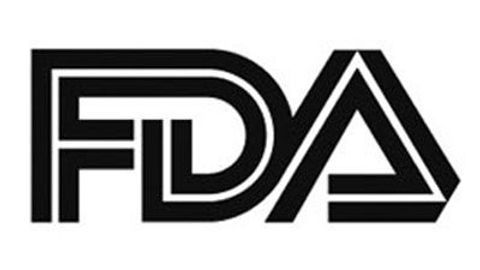FDA Grants CRB-701 Fast Track Status in R/R Cervical Cancer
CRB-701 has gained FDA fast track status for the treatment of adult patients with relapsed/refractory metastatic cervical cancer.

- The FDA granted fast track designation to CRB-701 (SYS6002) in relapsed/refractory (R/R) metastatic cervical cancer.
- CRB-701 is a Nectin-4–directed antibody-drug conjugate (ADC).
- A phase 1/2 trial (NCT06265727) is currently evaluating the agent in patients with solid tumors that are known to be associated with high Nectin-4 expression.
The FDA granted fast track designation to CRB-701, a Nectin-4–directed ADC for the potential treatment of adult patients with R/R metastatic cervical cancer.1
CRB-701, a next-generation ADC, features a site-specific, cleavable linker; a homogenous,consistent drug-antibody ratio of 2, and a novel monoclonal antibody targeting Nectin-4.1,2This agent was developed to address dose-limiting toxicities (DLTs) that are linked to the linker-payload system used in enfortumab vedotin-efjv (Padcev).2
Currently, a 3-part, phase 1/2 trial (NCT06265727) is evaluating the agent’s safety, pharmacokinetics (PK), and efficacy in patients with solid tumors that are known to be associated with high Nectin-4 expression. The trial is ongoing in the US and Europe. With enrollment in the dose-escalation portion of the study now complete, first data from this portion is expected to be released in early 2025.1
Patients aged 18 years of age with advanced urothelial carcinoma or Nectin-4–positive advanced solid tumors are eligible for enrollment in the study if they have no uncontrolled diabetes, an ECOG performance status of 0-1, adequate organ function, and no active central nervous system metastases.2,3
Concept of gynecologic cancer: © tom - stock.adobe.com

The dose-escalation phase of the study employs a Bayesian Optimal Interval design, incorporating accelerated titration at the initial dose level. Those included in the study are receiving 1 of 7 escalating doses of CRB-701 given via intravenous infusion every 3 days over a 21-day cycle. These doses range from 0.2 mg/kg to 4.5 mg/kg.
The primary end points include assessing the safety and tolerability of CRB-701 in part A evaluating the disease control rate (DCR) and objective response rate (ORR) in parts B and C. Secondary end points include PK, safety, and antitumor activity.
Patients enrolled in the dose-escalation phase represented 5 different tumor types, with ages ranging from 35 to 76 years. The majority were female (70.3%).3
Findings From the Phase 1 Trial of CRB-701
According to updated findings from the phase 1 portion of the study presented at the 2024 American Society of Clinical Oncology Annual Meeting, CRB-701 showed promising antitumor responses across multiple dose levels. The agent was also generally well tolerated.3,4
At a data cutoff of May 2024, the agent induced responses across tumor types. Specifically at dose levels of 2.7 mg/kg or higher, the ORR was 40%. This included 6 partial responses (PRs) and 2 unconfirmed responses.4 The DCR in these patients was 73%.
Among those with metastatic urothelial cancer (n = 9), the ORR was 44%, and included 4 PRs and 1 unconfirmed response. The DCR was 78%. Those with cervical cancer (n = 7) had an ORR of 43%, including 3 PRs and 1 unconfirmed response, and the DCR was 86%.
As of the data cutoff, CRB-701 demonstrated its first confirmed case of stable disease at the 0.6 mg/kg dose level and the first confirmed PR in the metastatic urothelial cancer cohort at the 1.2 mg/kg dose level. Early PK analysis revealed consistently lower levels of free monomethyl auristatin E across all dose levels compared with enfortumab vedotin.3,4
In terms of safety, the dose-escalation phase primarily involved grade 1/2 adverse events (AEs), with no grade 4/5 AEs or DLTs reported to date.2 The most common treatment-emergent AEs were anemia and eye-related events. One patient treated with the 2.7 mg/kg dose had a grade 3 rash lasting 8 days, which did not require dose modification or interruption. Further, there were 2 cases of skin rash (grade 1 and grade 2) resolved without intervention. Since the January 2024 update, no new treatment-related serious AEs have been reported.
One case of grade 1 peripheral neuropathy occurred alongside grade 3 hypokalemia, both resolving within 10 days after potassium replacement therapy. There were 2 grade 3 corneal disorders seen at the 2.7 mg/kg and 3.6 mg/kg dose levels, leading to the implementation of preventive eye care measures. No corneal events have been noted at the 4.5 mg/kg dose level. Over 50% of patients presented with corneal disorders or dry eye symptoms at baseline.4
The dose-escalation phase of the trial is progressing at the 4.5 mg/kg dose level, while dose expansion cohorts at the 2.7 mg/kg and 3.6 mg/kg levels are further evaluating pharmacology and safety.3
REFERENCES
FDA grants fast track designation to CRB-701 for the treatment of relapsed or refractory metastatic cervical cancer. News Release. Corbus Pharmaceuticals. December 3, 2024. Accessed December 5, 2024. https://tinyurl.com/3r38fyyc
A phase 1/2 study to investigate CRB-701 in solid tumors. ClinicalTrials.gov. Updated August 20, 2024. Accessed December 5, 2024. https://www.clinicaltrials.gov/study/NCT06265727?term=CRB-701&rank=1
Ye DW, Zhang J, Yang H, et al. Clinical update on the first-in-human trial of SYS6002 (CRB-701), a next-generation, Nectin-4 targeting, MMAE bearing, antibody drug conjugate. J Clin Onc. 2024;42(suppl 16):3151. doi:10.1200/JCO.2024.42.16_suppl.3151
SYS6002 (CRB-701) a next-generation Nectin-4 targeting antibody drug conjugate continues to demonstrate encouraging safety and efficacy observed in patients with Nectin-4 positive tumors in a clinical update presented at ASCO 2024. News Release. Corbus Pharmaceuticals. June 1, 2024. Accessed December 5, 2024. https://tinyurl.com/38zppxxs






